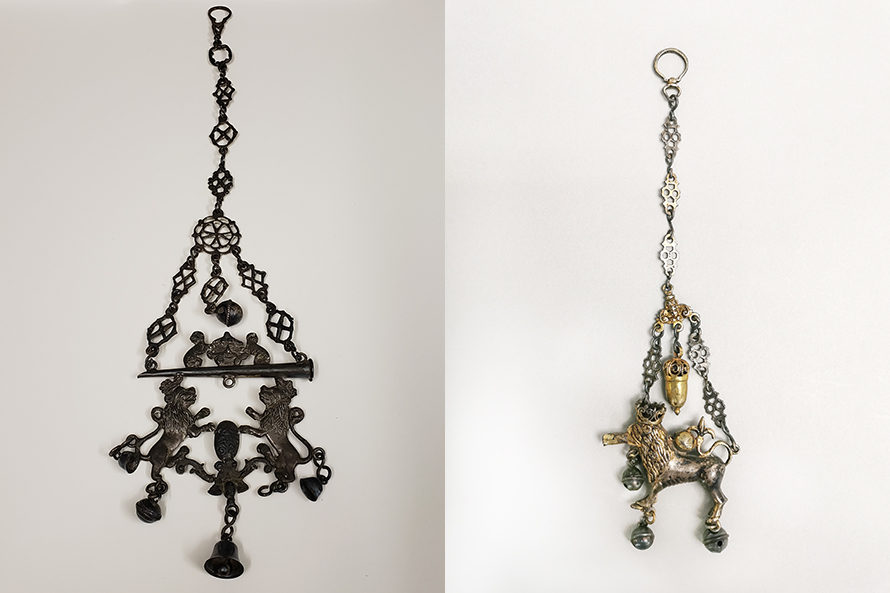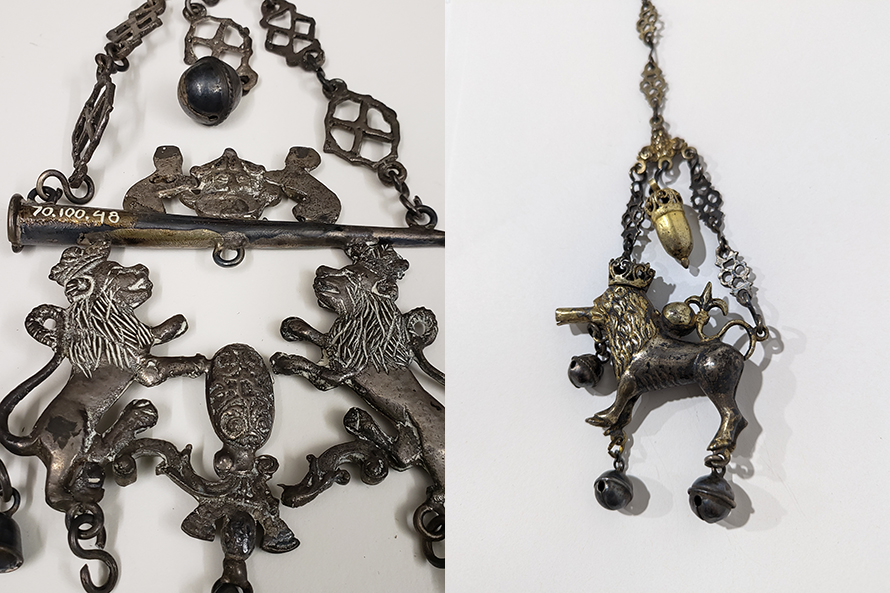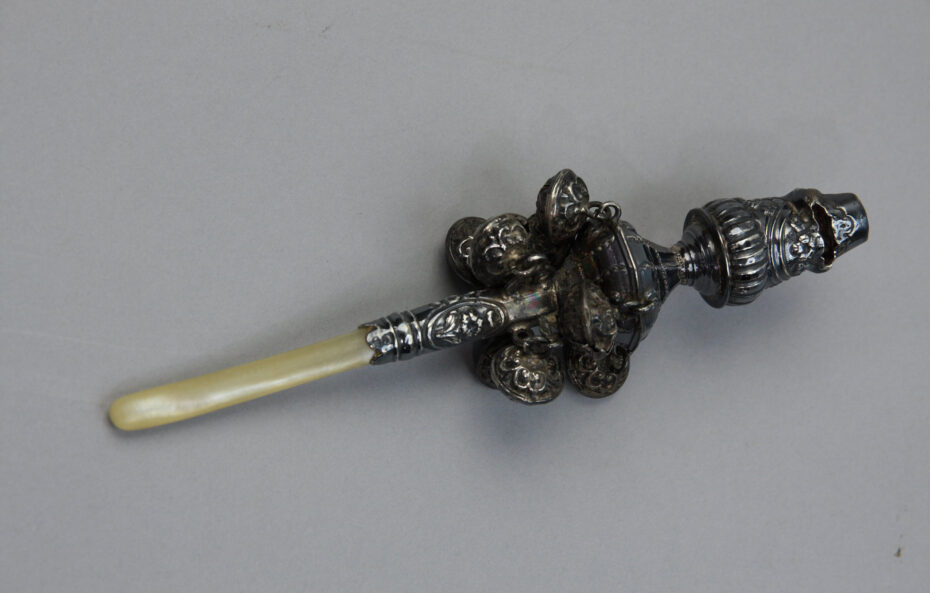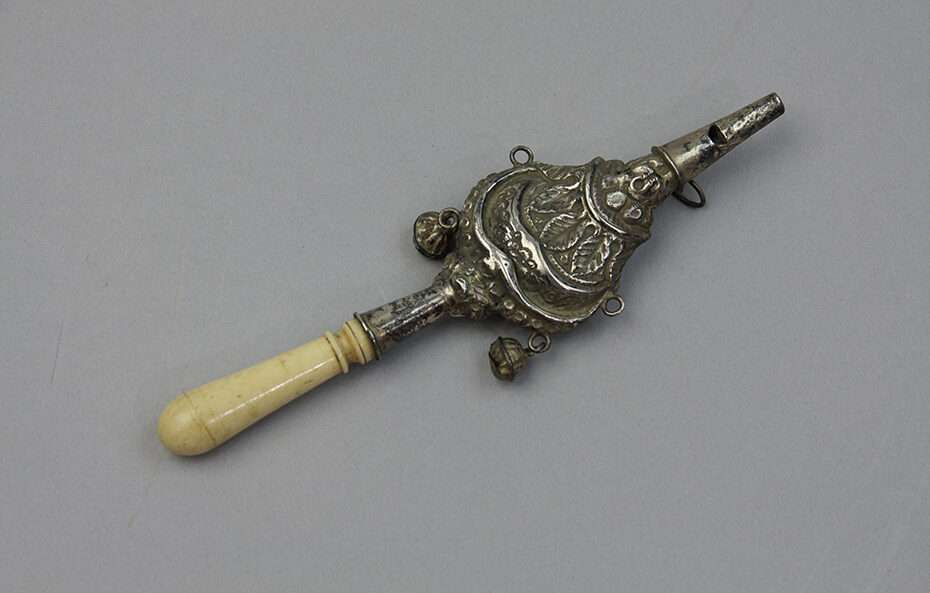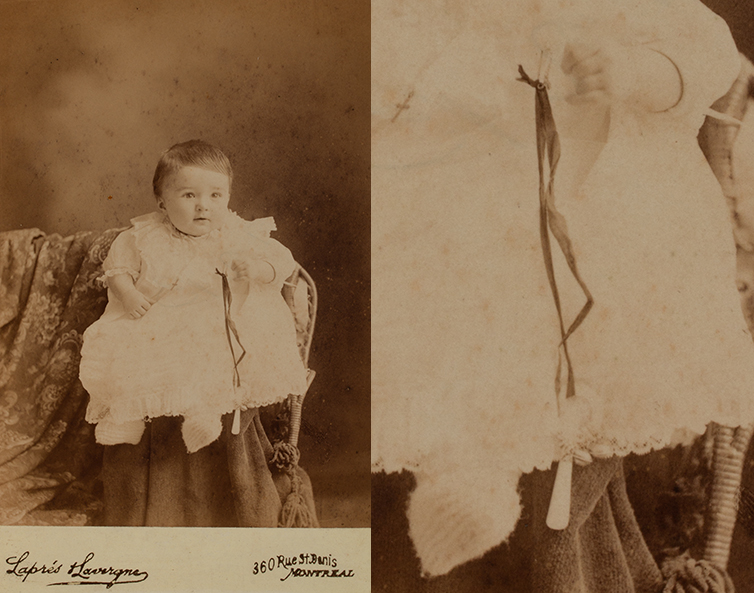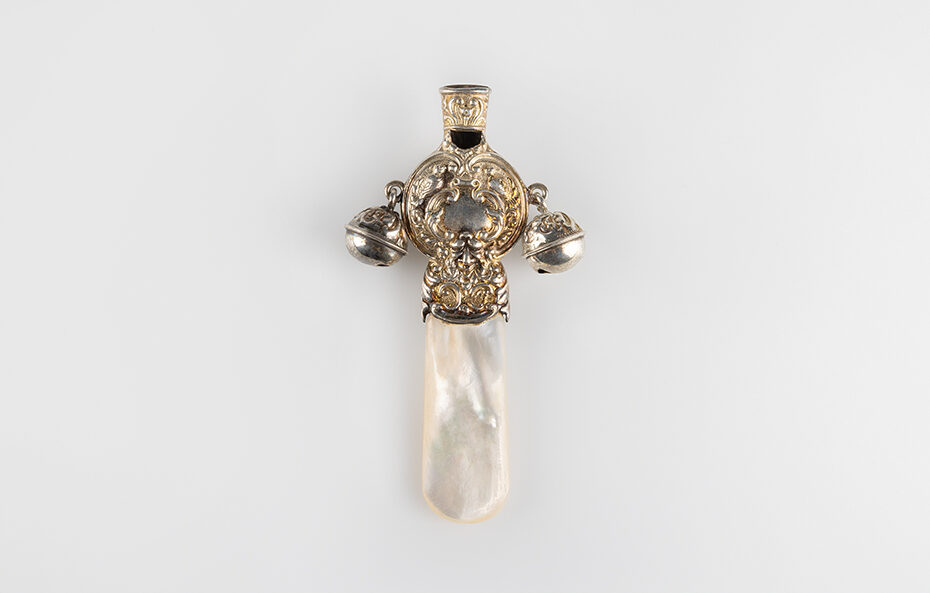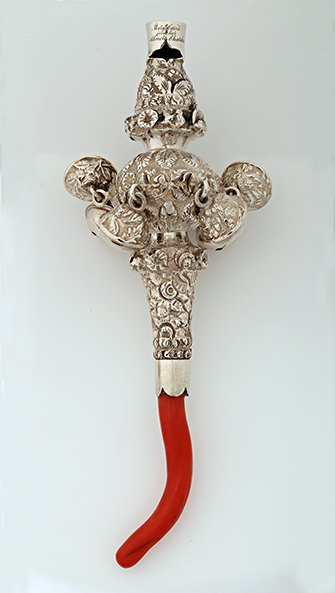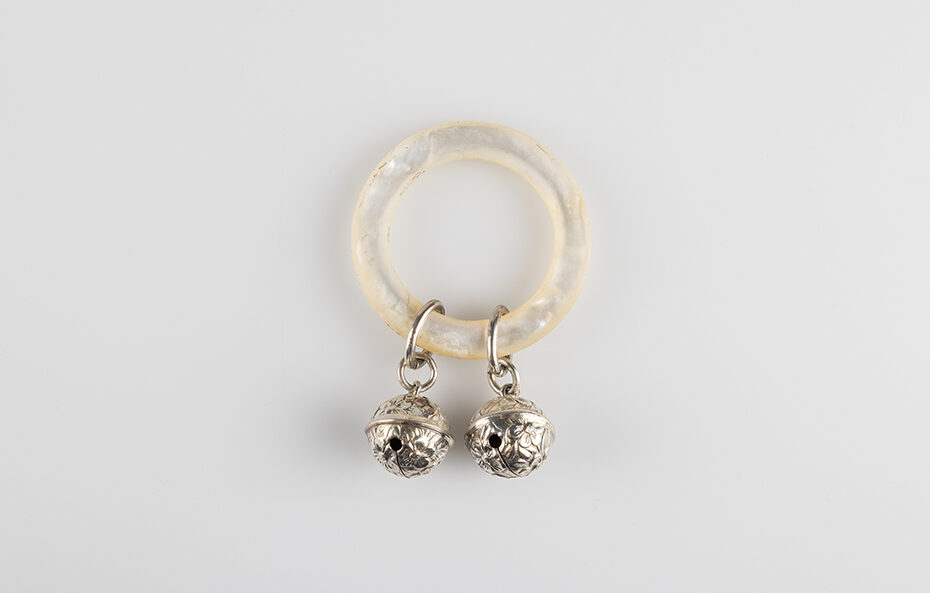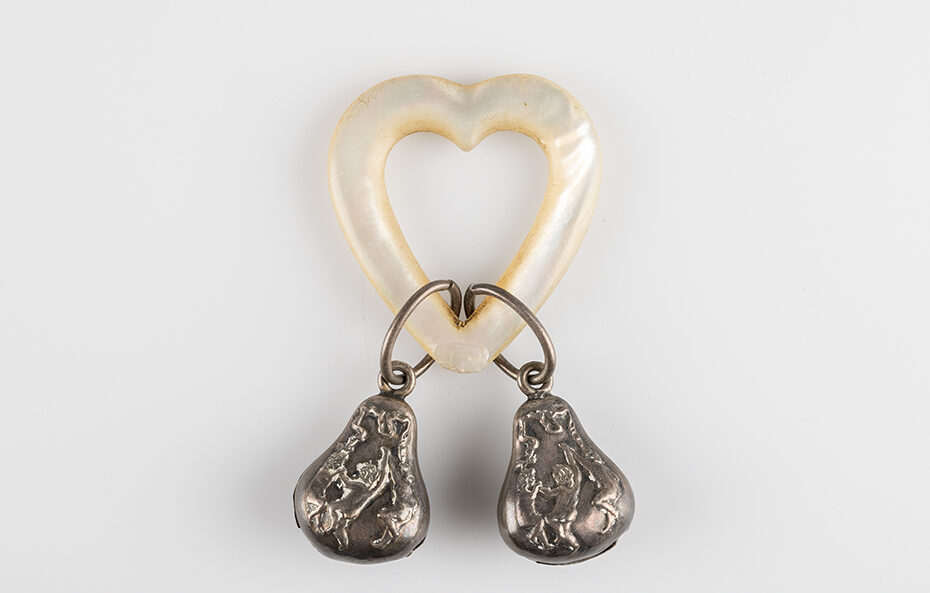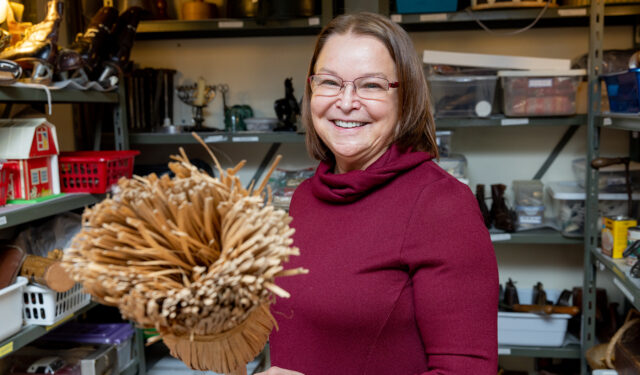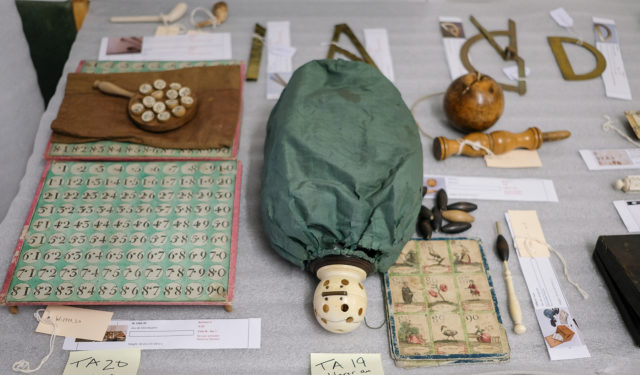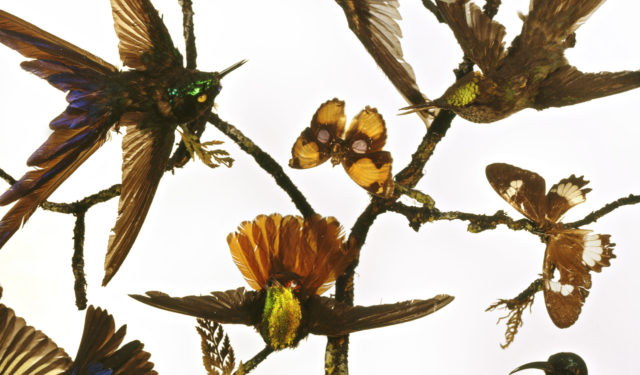The rattle: A treasured baby toy
Discover a small collection of surprisingly opulent children's toys!
When I became a grandmother, I spent a lot of time thinking about what toy to give my granddaughter. I obviously wanted something to stimulate her senses—sight, sound and touch—as well as her motor skills. Ironically, despite countless technological advances and the myriad options offered by the global toy industry, the object that best met my criteria is one of the oldest toys in the world.1 Of course, I am talking about the baby rattle, the ultimate early learning toy.
| Discover the toys on Online Collections |
A universal children’s toy, the baby rattle has endured for millennia. In the past, rattles usually came in a variety of simple shapes, made from materials like wood, clay, horn or gourds. However, the McCord Stewart Museum’s collection includes a small number of surprisingly valuable rattles. From the Renaissance to the late 19th-century, in European high society and later in that of North America, baby rattles became luxury objects that reflected the wealth and social status of both child and family.
A BABY RATTLE...FOR THE NURSEMAID
There are two types of rattles: those placed directly in babies’ hands, and those used by nursemaids to stimulate them. Custom-made by specialized artisans, the latter are veritable treasures made of luxury materials like silver, coral, mother-of-pearl and ivory.
In fact, the collection’s two oldest rattles seem designed to be admired more than handled. Resembling sound-producing mobiles, they would hang from the neck or belt of the mother or nursemaid, who would shake the little bells to distract the child.
Both are decorated with crowned lions, noble felines symbolizing royalty. In one, two lions stand on their hind legs, while in the other, a lion stands on four legs, with a fleur-de-lis at the end of its tail. The big acorn hanging over the latter’s head represents the oak, a tree that embodies strength and longevity.
Although we do not know who originally owned these rattles, we do know what they were used for. In addition to little bells, they have whistles that the nursemaid could blow to attract the child’s attention. The sound was also supposed to chase away evil spirits. In the first rattle, the whistle is the clarion below the monkeys, while in the second, it is the lion’s muzzle.
Two rattles from the 17th century have a more familiar shape,2 but are just as precious. Made of silver embossed with floral motifs, they feature a mother-of-pearl or ivory handle that the child could grasp and later chew to relieve teething pain. Both are equipped with bells and whistles, with the whistle at the opposite end of the handle.
A photograph from the Museum’s Photography collection taken by the Laprés & Lavergne studio in Montreal is evidence that this type of rattle was used up to the 20th century. It shows a similar rattle hanging from a ribbon attached to the child’s clothing by a safety pin.
FROM PRIZED FAMILY POSSESSION TO MUSEUM TREASURE
The most extraordinary rattle in the collection has an impressive silver core embossed with flowers,3 four bells, and a scarlet red coral handle that the child could chew on when teething. In addition to desirable physical properties, coral was thought to have magical powers capable of protecting the baby against disease and enchantment.
The whistle, located opposite the handle, bears the inscription: “Margt Cassils from her Uncle Charles.” Some genealogical research has turned up information about the rattle’s original owner, Margaret Cassils, who was born in Denny, Scotland, in 1830. The daughter of John Cassils and Margaret Murray, in 1854 she married Jonathan Hodgson (1827-1914), co-founder of Hodgson, Summer and Co., a company specialized in imported fabrics and sewing supplies, located on St. Paul Street in Montreal. Margaret Cassils had six children and died in 1928.
This luxury toy was treasured by Margaret’s children, grandchildren, and great-grandchildren before finally making its way to the McCord Stewart Museum 175 years after her birth. A prized family possession that has become a museum treasure, it eloquently chronicles not only the status of this family, but also the strong family ties between the generations.
Popularized in the late 19th and early 20th centuries, rattle teething rings are easier for babies to grasp. They are usually made of a mother-of-pearl ring and silver bells. Dating from the early 20th century, one of the two rattles pictured is heart-shaped and has bells decorated with cherubs—small protective angels—dancing in a circle.
A CRITICIZED LUXURY TOY
Gifting luxury objects at the birth or baptism of a child is a very old practice that confirmed the family’s status by immediately establishing the child’s position in the social hierarchy. However, this practice was not universally supported. As early as the 18th century, it was criticized by writer and philosopher Jean-Jacques Rousseau, who wrote the following in Émile, ou De l’éducation, his 1762 treatise on the nature of education:
We no longer aim at simplicity, even where children are concerned. Golden and silver bells, corals, crystals, toys of every price, of every sort. What useless and mischievous affectations they are! Let there be none of them, — no bells, no toys. A little twig covered with its own leaves and fruit, — a poppy-head, in which the seeds can be heard rattling, — a stick of liquorice he can suck and chew, these will amuse a child quite as well as the splendid baubles, and will not disadvantage him by accustoming him to luxury from his very birth.4
This criticism is still relevant today as major luxury brands increasingly enter the realm of children’s products.
Nowadays, the arrival of a baby is rarely marked by the gift of a silver rattle.5 Nonetheless, the rattle—in its many forms—remains a timeless gift. The ultimate interactive toy, it is beloved by many babies, including my granddaughter!
REFERENCES
D’Allemagne, Henry-René. Histoire des jouets (Paris: Librairie Hachette & Cie., 1902), 21-27. https://ia800402.us.archive.org/19/items/histoiredesjouet00alle/histoiredesjouet00alle.pdf (accessed February 3, 2023)
Richelet, P. Dictionnaire françois contenant les mots et les choses, plusieurs nouvelles remarques sur la langue françoise… (Geneva: Jean Herman Widerhold, 1688), 361.
Rousseau, Jean-Jacques. Émile, ou De l’éducation, in Œuvres complètes (Paris: Seuil, 1971) (1st ed. 1762), vol. III., 48.
Vandroux, Karine. “Le hochet dans l’histoire,” Spirale 4, no. 24 (2002): 113-123. https://www.cairn.info/revue-spirale-2002-4-page-113.htm (accessed February 28, 2023)
NOTES
1. The world’s oldest baby rattle was found in Yeşilova, in the Turkish province of Aksaray. It is 4,200 years old.
2. In the first dictionary of the French language by Richelet, rattles were described as follows: Baby rattles are usually made of a piece of silver about the width of a pinky finger, & twice as long, at the end of which is set a slender piece of ivory or glass, adorned with three or four little bells & which is hung from the neck of a child in a cradle for its entertainment and amusement. [trans.] P. Richelet, Dictionnaire françois contenant les mots et les choses, plusieurs nouvelles remarques sur la langue françoise… (Geneva: Jean Herman Widerhold, 1688).
3. The rattle bears the hallmark “H & H,” possibly of a Scottish master silversmith, but no other marks.
4. Jean-Jacques Rousseau, Emile; or, Concerning Education (Extracts), translated by Eleanor Worthington (Boston: D.C. Heath & Company, 1889) p. 35.
5. Baby cups, egg cups, napkin rings and cutlery are still popular birth and baptism gifts.

